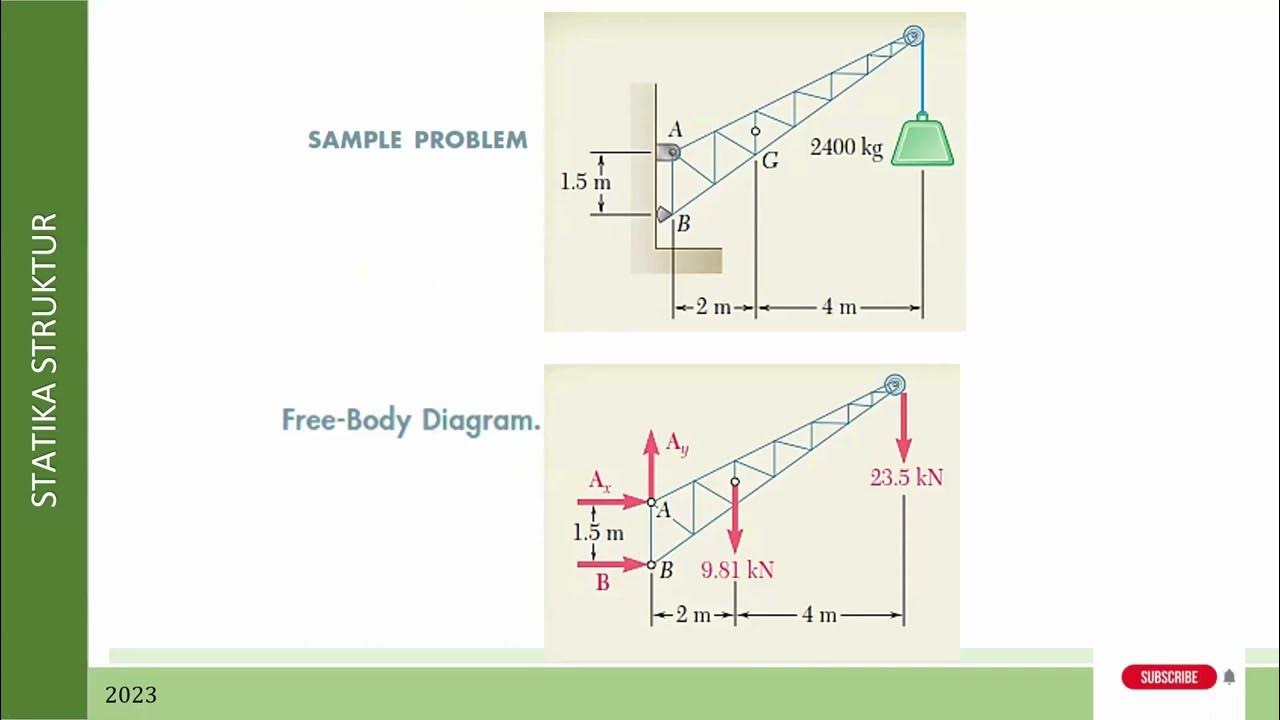Structural Theory 1 Chapter 1 Part III (with Subtitles)
Summary
TLDRThis video discusses different structural systems used in construction, focusing on steel frames, trusses, cables, and arches. Steel frames, composed of beams and columns, support roofs and bridges. Trusses, made of slender elements like angle bars, transmit loads in structures. The video explains the difference between tensile-loaded cables and compressive-loaded arches, using examples like the Bamban Bridge in the Philippines. It also describes how cables carry loads and arches rely on compressive forces between stones to maintain stability. The content offers a basic understanding of structural analysis and the function of these elements in engineering.
Takeaways
- 😀 Steel frames, commonly used in Clark City, Pampanga, are often made of steel trusses and other structural elements like beams and columns.
- 😀 Trusses are primarily used in roof systems and bridges to transmit loads to other structural components such as beams and columns.
- 😀 Roof trusses carry loads to beams and columns, while bridge trusses support floor beams and stringers.
- 😀 Trusses are made up of slender elements, such as angle bars, which help in distributing loads efficiently.
- 😀 In structural analysis, trusses are only subjected to axial loads, with the goal of determining whether the members are under tension or compression.
- 😀 Cables and arches are two types of structural systems that bear different types of loads: cables carry tensile loads, while arches carry compressive loads.
- 😀 Cables are typically concave downward in shape, while arches are convex upward, which helps in identifying the type of load they carry.
- 😀 An example of a cable system can be seen in a bridge truss, where cables carry tensile loads from the bridge to the support structures.
- 😀 The Bamban Bridge in Tarlac is a notable example of an arch structure, which supports compressive loads through its upward convex shape.
- 😀 Arch structures, particularly those made of stone, rely on compressive forces to transfer loads across their structure, with the stones pushing against each other to distribute the weight.
Q & A
What is the primary function of trusses in construction?
-Trusses are primarily used in roof systems or bridges to transmit loads to other structural members such as beams and columns.
What are trusses made of?
-Trusses are made up of slender elements such as angle bars. They consist of a combination of beams and columns.
What types of loads do trusses experience?
-Trusses are subjected to axial loads, and during analysis, it is determined whether the members are in compression or tension.
What is the difference between a cable and an arch in terms of load handling?
-A cable carries tensile loads, whereas an arch carries compressive loads.
How do the shapes of cables and arches differ?
-Cables form a concave downward shape, while arches have a convex upward shape.
Can you give an example of a bridge that uses cables?
-An example of a bridge supported by cables is a bridge truss that carries tensile loads.
What is a well-known example of an arch bridge in the Philippines?
-The Bamban Bridge in Tarlac, Philippines, is a well-known example of an arch structure.
How do arch bridges handle loads?
-In arch bridges, the stones or materials push against each other to handle compressive loads, transferring the load until it reaches the support.
What material is commonly used in traditional arch bridges?
-Traditional arch bridges are often composed of stone, which works together under compression to bear loads.
How do compressive forces behave in an arch structure?
-In an arch, the compressive forces are transferred through the structure, with each stone or material pushing against the others, which allows the arch to bear heavy loads.
Outlines

This section is available to paid users only. Please upgrade to access this part.
Upgrade NowMindmap

This section is available to paid users only. Please upgrade to access this part.
Upgrade NowKeywords

This section is available to paid users only. Please upgrade to access this part.
Upgrade NowHighlights

This section is available to paid users only. Please upgrade to access this part.
Upgrade NowTranscripts

This section is available to paid users only. Please upgrade to access this part.
Upgrade NowBrowse More Related Video
5.0 / 5 (0 votes)





